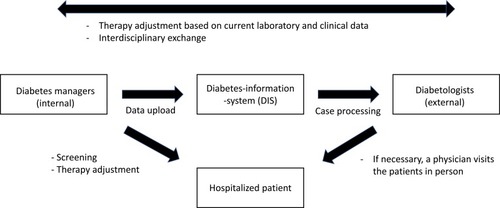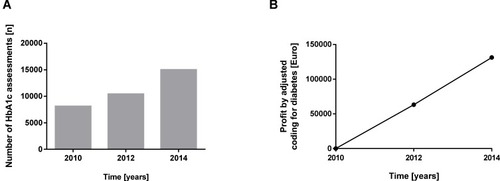Figures & data
Figure 1 Model of the TeDia system and its interrelationships. Diabetes managers are nurses specially trained in diabetes.

Figure 2 Frequency of diabetes-related diagnoses. Illustrated are absolute changes from 2010 to 2014 regarding (A) secondary diagnosis diabetes, (B) uncomplicated diabetes, (C) complicated diabetes, (D) decompensated diabetes, (E) neuropathy and (F) nephropathy.



